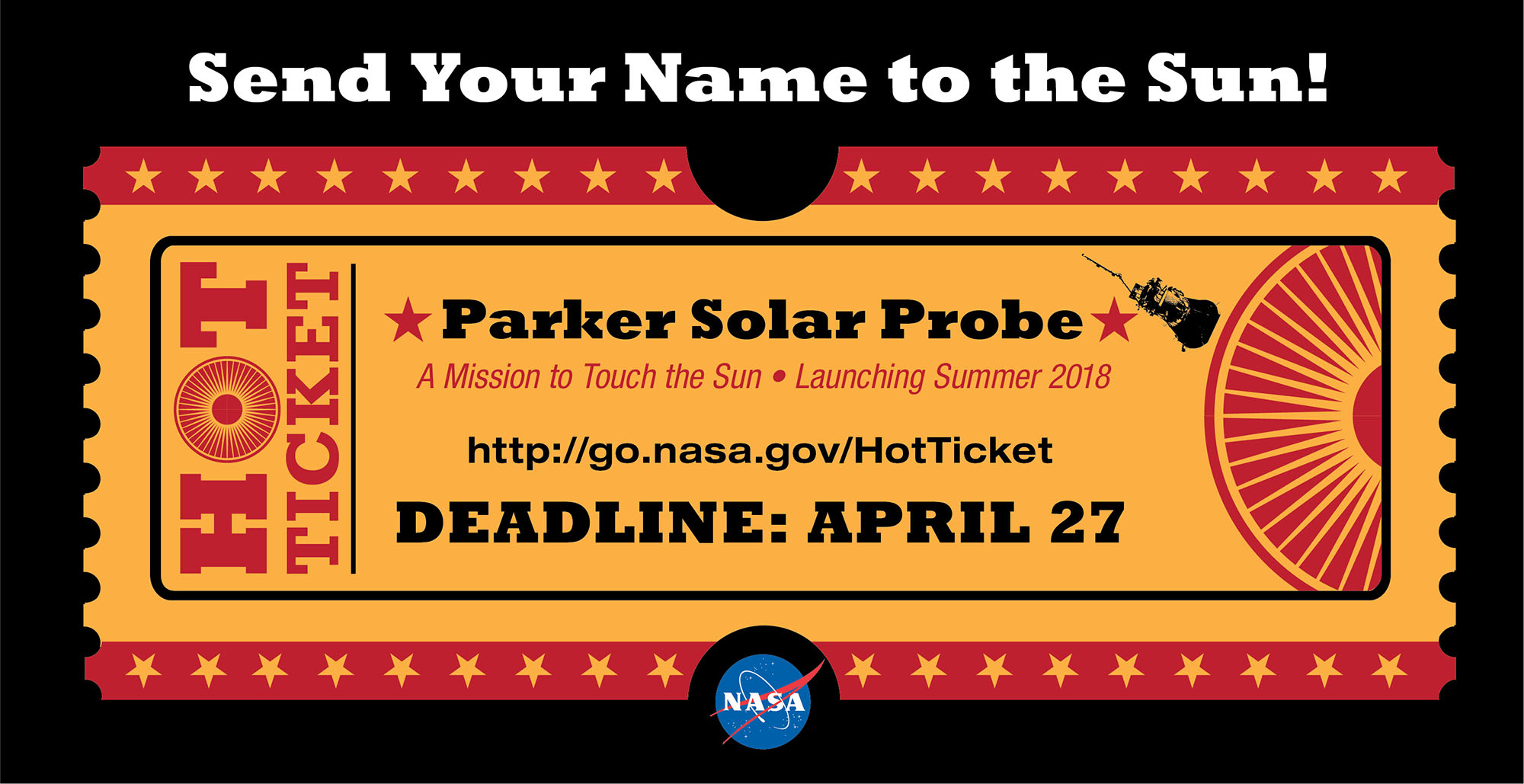William Shatner Wants You to Send Your Name to the Sun on NASA's Historic Solar Probe

Your name could soon zoom through the sun's superheated outer atmosphere, just like William Shatner's.
The "Star Trek" actor has signed up to put his name on a microchip that will fly aboard NASA's Parker Solar Probe, which will launch on a historic sun-studying mission this summer. And he wants you to book a seat as well.
"The first-ever spacecraft to the sun, NASA's Parker Solar Probe, will launch this year on a course to orbit through the heat of our star's corona, where temperatures are greater than 1 million degrees," Shatner said in a new NASA video about this public-outreach effort. "The spacecraft will also carry my name to the sun, and your name, and the names of everyone who wants to join this voyage of extreme exploration." [NASA's Parker Solar Probe Mission in Pictures]
You can get your name on that chip for free by visiting the NASA "Hot Ticket" site through April 27.
The $1.5 billion Parker Solar Probe mission is scheduled to launch from NASA's Kennedy Space Center in Florida on July 31. If all goes according to plan, the spacecraft will perform 24 close flybys of the sun over the next seven years, at times getting within just 3.9 million miles (6.2 million kilometers) of the solar surface. That's seven times closer than any other probe has ever gotten to the sun, NASA officials said.
The Parker Solar Probe is therefore outfitted with a 4.5-inch-thick (11.4 centimeters) carbon-composite shield, which will protect the spacecraft from radiation levels 475 times greater than those we experience here on Earth and temperatures that reach 2,500 degrees Fahrenheit (1,370 degrees Celsius). The spacecraft's onboard instruments should be able to operate at room temperature despite these extreme external conditions, NASA officials said.
Those instruments will make a variety of measurements, helping to characterize the sun's structure, magnetic and electric fields and the solar wind, the stream of charged particles flowing from our star. Mission scientists hope these observations help solve two longstanding solar mysteries: how the solar wind is accelerated, and why the sun's corona, or outer atmosphere, is so much hotter than the surface (which reaches a mere 10,000 degrees F, or 5,500 degrees C.)
Breaking space news, the latest updates on rocket launches, skywatching events and more!
"Parker Solar Probe is, quite literally, the fastest, hottest — and, to me, coolest — mission under the sun," project scientist Nicola Fox, of the Johns Hopkins Applied Physics Laboratory in Baltimore, said in a statement. "This incredible spacecraft is going to reveal so much about our star and how it works that we've not been able to understand."
And about that speed: During its closest approaches to the sun, the spacecraft will top out at about 430,000 mph (690,000 km/h). The current speed record is held by NASA's Juno probe, which was accelerated to about 165,000 mph (265,000 km/h) by Jupiter's powerful gravity upon its approach to the gas giant in the summer of 2016.
The Parker Solar Probe was originally called Solar Probe Plus. In May 2017, NASA announced the name change, which honors pioneering astrophysicist Eugene Parker, who predicted the solar wind's existence in 1958. In addition to the microchip with all the names, the Parker Solar Probe will also carry a copy of Parker's 1958 paper, along with photos of the scientist, mission team members have said.
Shatner's name really gets around the solar system. The actor also helped publicize a similar public-outreach effort for NASA's Mars InSight mission, which will launch toward the Red Planet this May. Shatner's name is among 2.4 million that will travel on a chip aboard InSight.
Follow Mike Wall on Twitter @michaeldwall and Google+. Follow us @Spacedotcom, Facebook or Google+. Originally published on Space.com.

Michael Wall is a Senior Space Writer with Space.com and joined the team in 2010. He primarily covers exoplanets, spaceflight and military space, but has been known to dabble in the space art beat. His book about the search for alien life, "Out There," was published on Nov. 13, 2018. Before becoming a science writer, Michael worked as a herpetologist and wildlife biologist. He has a Ph.D. in evolutionary biology from the University of Sydney, Australia, a bachelor's degree from the University of Arizona, and a graduate certificate in science writing from the University of California, Santa Cruz. To find out what his latest project is, you can follow Michael on Twitter.

